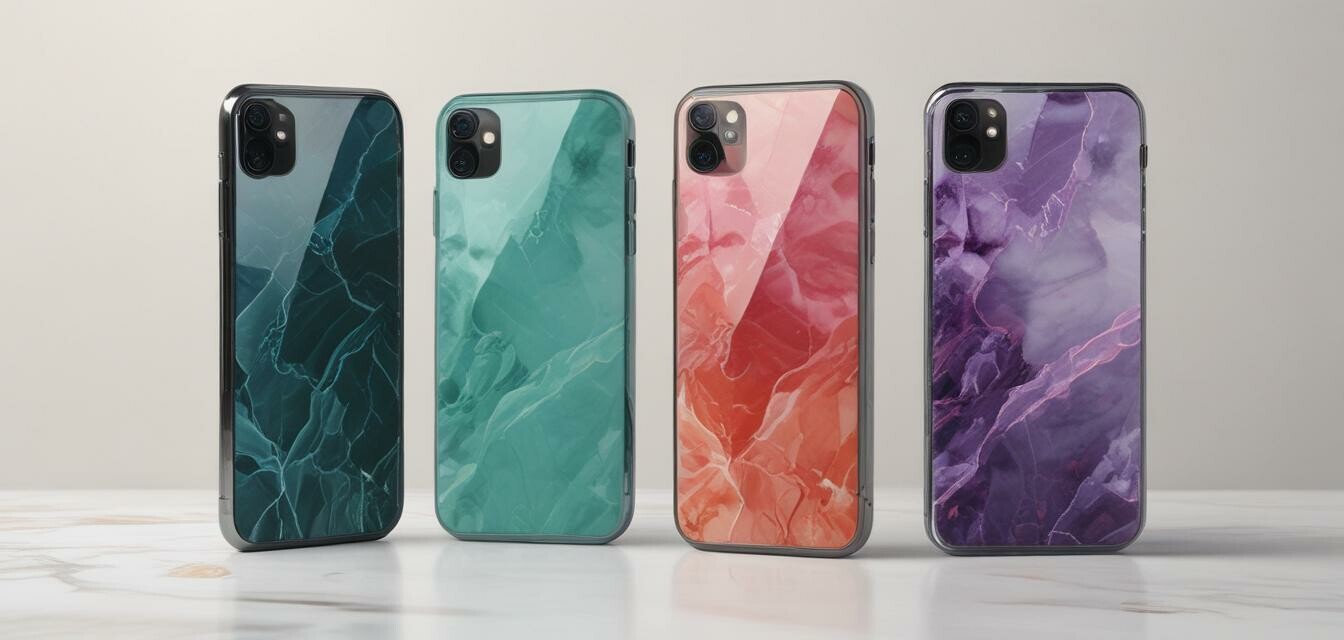
The best screen protectors for everyday use
Key Takeaways
- Screen protectors provide essential protection for your devices.
- Look for materials that offer durability and scratch resistance.
- Consider the aesthetic appeal that complements your style.
- Check compatibility with different phone models.
- Research warranty policies and return options.
Choosing the best screen protector for your phone can be overwhelming, especially with so many options in today's market. As gemstone phone users, it's essential to combine practicality with aesthetic appeal. This guide will help you navigate the array of screen protectors available, ensuring you find one that not only protects your device but also complements your unique style.
Why you need a screen protector
Screen protectors serve as a first line of defense against everyday wear and tear. Here's why they are essential:
- Protection against scratches: With daily use, your phone is susceptible to scratches and minor impacts.
- Preserving resale value: Keeping your phone in pristine condition can enhance its resale value.
- Reduce glare: Some screen protectors can help reduce glare from sunlight or artificial lighting.
Types of screen protectors
Understanding the various types of screen protectors will help you make a more informed decision:
| Type | Material | Pros | Cons |
|---|---|---|---|
| Tempered Glass | Glass | High durability, easy installation, excellent clarity | Can be heavy, may shatter on impact |
| Plastic Film | Polyurethane | Lightweight, flexible, often less expensive | Lower durability, less scratch resistance |
| Liquid Screen Protector | Liquid polymer | Invisible protection, easy to apply | Less effective against strong impacts |
Factors to consider when choosing a screen protector
When shopping for a screen protector, consider the following factors:
- Compatibility: Ensure it fits your specific phone model, particularly considering camera placements and edges.
- Thickness: Thicker options often provide better protection, but might add bulk.
- Clarity: A high-quality protector should maintain the display's vibrancy.
- Touch sensitivity: Ensure it doesn’t compromise your touchscreen’s responsiveness.
Comparison of popular screen protectors
To further assist you, here's a simple comparison of some popular screen protectors designed for everyday use:
| Brand | Material | Features | Price Range |
|---|---|---|---|
| Brand A | Tempered Glass | Anti-fingerprint, anti-glare | $15 - $25 |
| Brand B | Plastic Film | Bubble-free installation, flexible | $10 - $15 |
| Brand C | Liquid Screen Protector | Invisible, compatible with other cases | $20 - $30 |
Where to buy high-quality screen protectors
Finding reputable sellers is crucial for purchasing screen protectors. Some recommended places include:
- Online marketplaces: Websites like Amazon offer a wide range of options.
- Local electronics stores: Check your nearby stores for in-stock protectors.
- Phone accessory shops: Specialty shops may offer unique and premium options.
Pros
- Extra layer of protection for your device.
- Enhances the phone's appearance with stylish options.
- Often affordable and easy to replace.
Cons
- Some may reduce screen sensitivity.
- Higher-end options can be pricey.
- Installation might be tricky without bubbles.
Tips for maintaining your screen protector
Beginner's Section
- Regularly clean the protector with a soft cloth to remove smudges.
- Avoid using harsh chemicals that might damage the protector.
- Replace worn or damaged protectors to ensure optimal protection.
Conclusion
When selecting a screen protector for your device, prioritize quality, protection level, and design. Combining practicality with gemstone aesthetics can elevate your phone while keeping it safe from damage. Remember to check compatibility, features, and always read customer reviews before making a purchase. For more information on phone jewelry products, check out our Buying Guides.